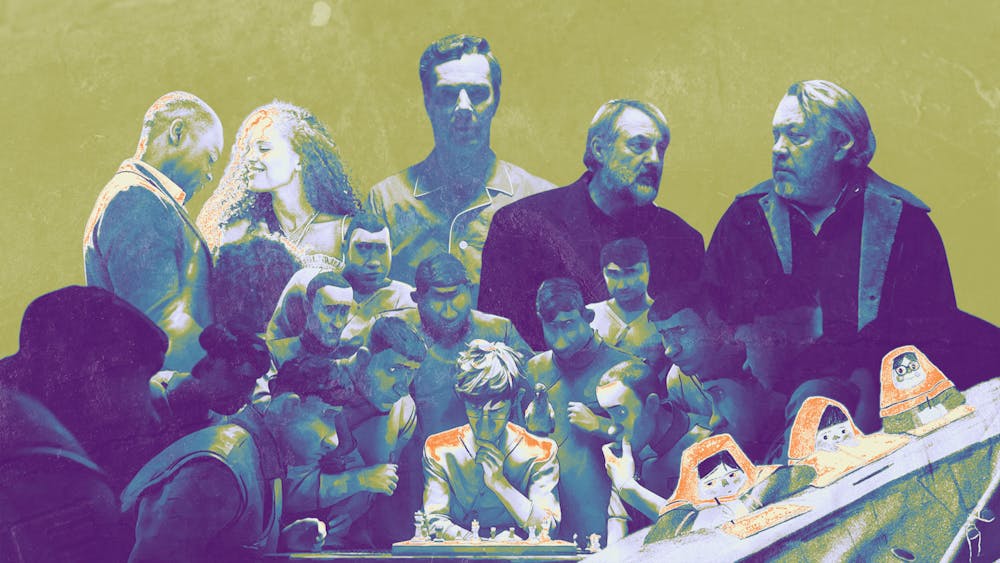There are three little–known categories in the Oscars, and I’ll give you a tiny hint—they all have the word "short" in the title. These narrative, documentary, and animated short film categories are preserving the artistic integrity of the Oscars.
Over the years, the Oscars have faced a lot of controversy over their politics. For larger awards, big production companies have teams of publicists and marketers who implement elaborate plans to try and curry favor. The Oscar committee is aware of this subversive influence, enforcing strict regulations against Oscar campaigns and bribery of judges. However, Sean Fennessey of NPR describes it as “an industry of friends … and of connectivity." Tête–à–têtes take place as informal dinner parties, and talking to committee members is simply "friend to friend."
I don't want to entirely fault studios for campaigning. They are businesses after all, and a Best Picture win definitely means major revenues. The Academy Award is the biggest opportunity to market a film. But this campaigning strips some of the artistic integrity of the awards, as every win needs to be taken with a grain of salt, and
Many of the nominated films for major categories are often from either established directors or major studios. With Oscar campaigns, truly indie films—and no, A24 productions do not count—that are not backed by studios you have heard of are entirely lost.
But shorts categories are a different world. There is a crucial difference in how the short film categories are selected. Whereas films in other categories need to be directly nominated by voting members of a branch and run for seven days in a theater in LA, the short film selection often goes through the film festival circuit. These festivals range from incredibly famous ones like Cannes to incredibly niche ones like deadCenter Film Festival. Qualifying festivals and awards are listed in an 18–page document; almost 500 awards among 200 festivals in total qualify a short film for the Oscars. The academy considers films that win particular awards at each festival.
Another important thing to note about these festivals: anyone can get in, and I truly mean anyone. Whereas theatrical releases are a bit more complicated in the process and require a lot of money—hence only major studios see nominations—festivals are often more egalitarian. Because the shorts are incredibly cheap to make, it is easier for the average person to make one without the backing of a major studio. These categories don’t face the same campaigning; in fact, very few of them have marketing budgets. Short films are often financed through grants and truly independent production companies.
I have a special affinity for short films as someone who makes them. They are incredibly underappreciated. By their nature, they are forced to deliver impactful messages in a short amount of time. They do not have a lot of time to provide exposition, so they must be more creative in how they craft their stories. These films are also not held down by the regulations of big studios, which limit sensitive content in order to gain a wider audience they can market to. Simply put, short films are forced to be more innovative. Shorts simply feel more personal—because they are. They have smaller teams working on them, and their passion is not easily lost in huge crews of hundreds of people. While movies like Oppenheimer are beautiful, they certainly do not seem like they were made by a group of friends who scraped together just enough funding to create a ten–minute film while still working full–time jobs.
These are films that are created for the arts' sake. I’m often disappointed, for example, by the animated features, as they often refrain from creative and stylistic approaches; the safe, Disney 3D–animation style has dominated the last decade of nominees. The animated shorts category, however, often has incredibly varied storytelling and animation styles. Instead of merely functioning as a medium to communicate the story, the style itself becomes a thoughtful choice that enhances the story greatly.
These films to need to be more appreciated. But at the same time, I am critical of what this kind of attention could mean. If the world gives the festival circuit as a whole more attention than major blockbusters, would it face the same pressures of Oscar campaigning? If there were more money put into it, would that hurt some of the artistic integrity?
Even this year, the winners reflected that influx of money. Two of this year's live–action short films, The After and The Wonderful Story of Henry Sugar, were produced by Netflix. The Wonderful Story of Henry Sugar ultimately took home the trophy, but it does not have the hallmarks of what makes short films so special: innovation and emerging talent. Yes, Wes Anderson is an outstanding filmmaker, yet this film did not capture my heart strings like Invincible or share the comedic genius of Knight of Fortune. Additionally, War is Over!, which won the animated short category, was stylistically the least creative, unlike Ninety–Five Senses, which incorporates several different animation styles, or Our Uniform, which utilizes a combination of live–action, stop–motion, and 2D animation to enhance the storyline. I was left to wonder if War is Over! won simply because big names—John Lennon and Yoko Ono—were behind the inspiration for the film. The nominations as a whole are incredibly creative, but I was disappointed by the winners. I hope that despite the results, the hard work and innovation that went into each of these short films are recognized and appreciated by the audiences.
In watching least one short film, whether it is on Short Verse, Omeleto, or the Oscar–nominated shorts, perhaps you can be inspired to fall in love with a new kind of cinema, just as much as I have.







